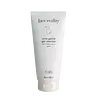What's inside
What's inside
 Key Ingredients
Key Ingredients

No key ingredients
 Benefits
Benefits

 Concerns
Concerns

 Ingredients Side-by-side
Ingredients Side-by-side

Water
Skin ConditioningSodium Stearoyl Glutamate
CleansingGlyceryl Stearate
EmollientStearic Acid
CleansingCocamidopropyl Betaine
CleansingGlycerin
HumectantPolyacrylate Crosspolymer-6
Emulsion StabilisingCetyl Alcohol
EmollientCaprylic/Capric Triglyceride
MaskingPanthenol
Skin ConditioningInulin
Skin ConditioningHydrolyzed Jojoba Esters
Skin ConditioningSaccharide Isomerate
HumectantAllantoin
Skin ConditioningBisabolol
MaskingAlpha-Glucan Oligosaccharide
CleansingAloe Barbadensis Leaf Juice Powder
Skin ConditioningCentella Asiatica Leaf Extract
Skin ConditioningXanthan Gum
EmulsifyingPhenoxyethanol
PreservativeEthylhexylglycerin
Skin ConditioningSodium Hydroxide
BufferingPotassium Sorbate
PreservativeSodium Gluconate
Skin ConditioningCitric Acid
BufferingSodium Citrate
BufferingWater, Sodium Stearoyl Glutamate, Glyceryl Stearate, Stearic Acid, Cocamidopropyl Betaine, Glycerin, Polyacrylate Crosspolymer-6, Cetyl Alcohol, Caprylic/Capric Triglyceride, Panthenol, Inulin, Hydrolyzed Jojoba Esters, Saccharide Isomerate, Allantoin, Bisabolol, Alpha-Glucan Oligosaccharide, Aloe Barbadensis Leaf Juice Powder, Centella Asiatica Leaf Extract, Xanthan Gum, Phenoxyethanol, Ethylhexylglycerin, Sodium Hydroxide, Potassium Sorbate, Sodium Gluconate, Citric Acid, Sodium Citrate
Water
Skin ConditioningSodium Cocoyl Glutamate
CleansingGlycerin
HumectantCaprylic/Capric Triglyceride
MaskingCocamidopropyl Betaine
CleansingSodium Laurylglucosides Hydroxypropylsulfonate
CleansingCellulose Gum
Emulsion StabilisingCoco-Caprylate/Caprate
EmollientHydroxyacetophenone
AntioxidantInulin
Skin ConditioningXanthan Gum
EmulsifyingEthylhexylglycerin
Skin ConditioningSodium Phytate
Cellulose
AbsorbentFructose
HumectantGlucose
HumectantPhenoxyethanol
PreservativeWater, Sodium Cocoyl Glutamate, Glycerin, Caprylic/Capric Triglyceride, Cocamidopropyl Betaine, Sodium Laurylglucosides Hydroxypropylsulfonate, Cellulose Gum, Coco-Caprylate/Caprate, Hydroxyacetophenone, Inulin, Xanthan Gum, Ethylhexylglycerin, Sodium Phytate, Cellulose, Fructose, Glucose, Phenoxyethanol
 Reviews
Reviews

Ingredients Explained
These ingredients are found in both products.
Ingredients higher up in an ingredient list are typically present in a larger amount.
This ingredient is an emollient, solvent, and texture enhancer. It is considered a skin-softener by helping the skin prevent moisture loss.
It helps thicken a product's formula and makes it easier to spread by dissolving clumping compounds.
Caprylic Triglyceride is made by combining glycerin with coconut oil, forming a clear liquid.
While there is an assumption Caprylic Triglyceride can clog pores due to it being derived from coconut oil, there is no research supporting this.
Learn more about Caprylic/Capric TriglycerideCocamidopropyl Betaine is a fatty acid created by mixing similar compounds in coconut oil and dimethylaminopropylamine, a compound with two amino groups.
This ingredient is a surfactant and cleanser. It helps gather the dirt, pollutants, and other impurities in your skin to be washed away. It also helps thicken a product and make the texture more creamy.
Being created from coconut oil means Cocamidopropyl Betaine is hydrating for the skin.
While Cocamidopropyl Betaine was believed to be an allergen, a study from 2012 disproved this. It found two compounds in unpure Cocamidopropyl Betaine to be the irritants: aminoamide and 3-dimethylaminopropylamine. High-grade and pure Cocamidopropyl Betaine did not induce allergic reactions during this study.
Learn more about Cocamidopropyl BetaineEthylhexylglycerin (we can't pronounce this either) is commonly used as a preservative and skin softener. It is derived from glyceryl.
You might see Ethylhexylglycerin often paired with other preservatives such as phenoxyethanol. Ethylhexylglycerin has been found to increase the effectiveness of these other preservatives.
Glycerin is already naturally found in your skin. It helps moisturize and protect your skin.
A study from 2016 found glycerin to be more effective as a humectant than AHAs and hyaluronic acid.
As a humectant, it helps the skin stay hydrated by pulling moisture to your skin. The low molecular weight of glycerin allows it to pull moisture into the deeper layers of your skin.
Hydrated skin improves your skin barrier; Your skin barrier helps protect against irritants and bacteria.
Glycerin has also been found to have antimicrobial and antiviral properties. Due to these properties, glycerin is often used in wound and burn treatments.
In cosmetics, glycerin is usually derived from plants such as soybean or palm. However, it can also be sourced from animals, such as tallow or animal fat.
This ingredient is organic, colorless, odorless, and non-toxic.
Glycerin is the name for this ingredient in American English. British English uses Glycerol/Glycerine.
Learn more about GlycerinInulin is a polysaccharide (carbohydrate) with prebiotic and antioxidant properties.
The majority of inulin is extracted from chicory, but can also be obtained from other plants such as garlic, onion, asparagus, and sugarcane.
Studies show inulin may help with controlling your skin's natural microbiota when applied topically.
The antioxidant potential of inulin varies depending on the source.
Learn more about InulinPhenoxyethanol is a preservative that has germicide, antimicrobial, and aromatic properties. Studies show that phenoxyethanol can prevent microbial growth. By itself, it has a scent that is similar to that of a rose.
It's often used in formulations along with Caprylyl Glycol to preserve the shelf life of products.
Water. It's the most common cosmetic ingredient of all. You'll usually see it at the top of ingredient lists, meaning that it makes up the largest part of the product.
So why is it so popular? Water most often acts as a solvent - this means that it helps dissolve other ingredients into the formulation.
You'll also recognize water as that liquid we all need to stay alive. If you see this, drink a glass of water. Stay hydrated!
Learn more about WaterXanthan gum is used as a stabilizer and thickener within cosmetic products. It helps give products a sticky, thick feeling - preventing them from being too runny.
On the technical side of things, xanthan gum is a polysaccharide - a combination consisting of multiple sugar molecules bonded together.
Xanthan gum is a pretty common and great ingredient. It is a natural, non-toxic, non-irritating ingredient that is also commonly used in food products.
Learn more about Xanthan Gum